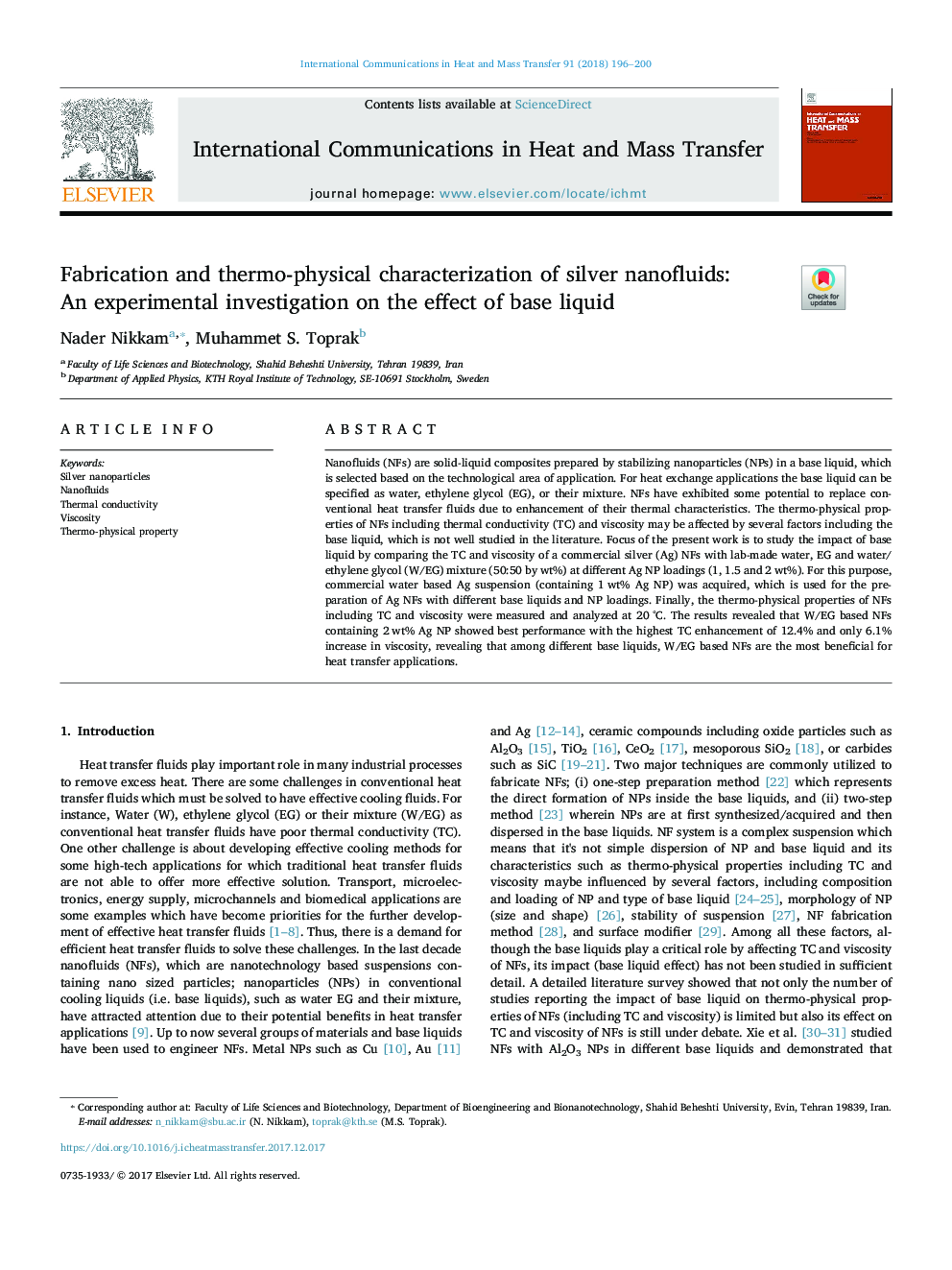| کد مقاله | کد نشریه | سال انتشار | مقاله انگلیسی | نسخه تمام متن |
|---|---|---|---|---|
| 7053082 | 1457463 | 2018 | 5 صفحه PDF | دانلود رایگان |
عنوان انگلیسی مقاله ISI
Fabrication and thermo-physical characterization of silver nanofluids: An experimental investigation on the effect of base liquid
ترجمه فارسی عنوان
ساخت و خصوصیات حرارتی فیزیکی نانوفیلد نقره: یک مطالعه تجربی در مورد اثر مایع پایه
دانلود مقاله + سفارش ترجمه
دانلود مقاله ISI انگلیسی
رایگان برای ایرانیان
کلمات کلیدی
نانوذرات نقره، نانوفیلد ها، هدایت حرارتی، ویسکوزیته، خصوصیات حرارتی فیزیکی،
موضوعات مرتبط
مهندسی و علوم پایه
مهندسی شیمی
جریان سیال و فرایندهای انتقال
چکیده انگلیسی
Nanofluids (NFs) are solid-liquid composites prepared by stabilizing nanoparticles (NPs) in a base liquid, which is selected based on the technological area of application. For heat exchange applications the base liquid can be specified as water, ethylene glycol (EG), or their mixture. NFs have exhibited some potential to replace conventional heat transfer fluids due to enhancement of their thermal characteristics. The thermo-physical properties of NFs including thermal conductivity (TC) and viscosity may be affected by several factors including the base liquid, which is not well studied in the literature. Focus of the present work is to study the impact of base liquid by comparing the TC and viscosity of a commercial silver (Ag) NFs with lab-made water, EG and water/ethylene glycol (W/EG) mixture (50:50 by wt%) at different Ag NP loadings (1, 1.5 and 2 wt%). For this purpose, commercial water based Ag suspension (containing 1 wt% Ag NP) was acquired, which is used for the preparation of Ag NFs with different base liquids and NP loadings. Finally, the thermo-physical properties of NFs including TC and viscosity were measured and analyzed at 20 °C. The results revealed that W/EG based NFs containing 2 wt% Ag NP showed best performance with the highest TC enhancement of 12.4% and only 6.1% increase in viscosity, revealing that among different base liquids, W/EG based NFs are the most beneficial for heat transfer applications.
ناشر
Database: Elsevier - ScienceDirect (ساینس دایرکت)
Journal: International Communications in Heat and Mass Transfer - Volume 91, February 2018, Pages 196-200
Journal: International Communications in Heat and Mass Transfer - Volume 91, February 2018, Pages 196-200
نویسندگان
Nader Nikkam, Muhammet S. Toprak,
